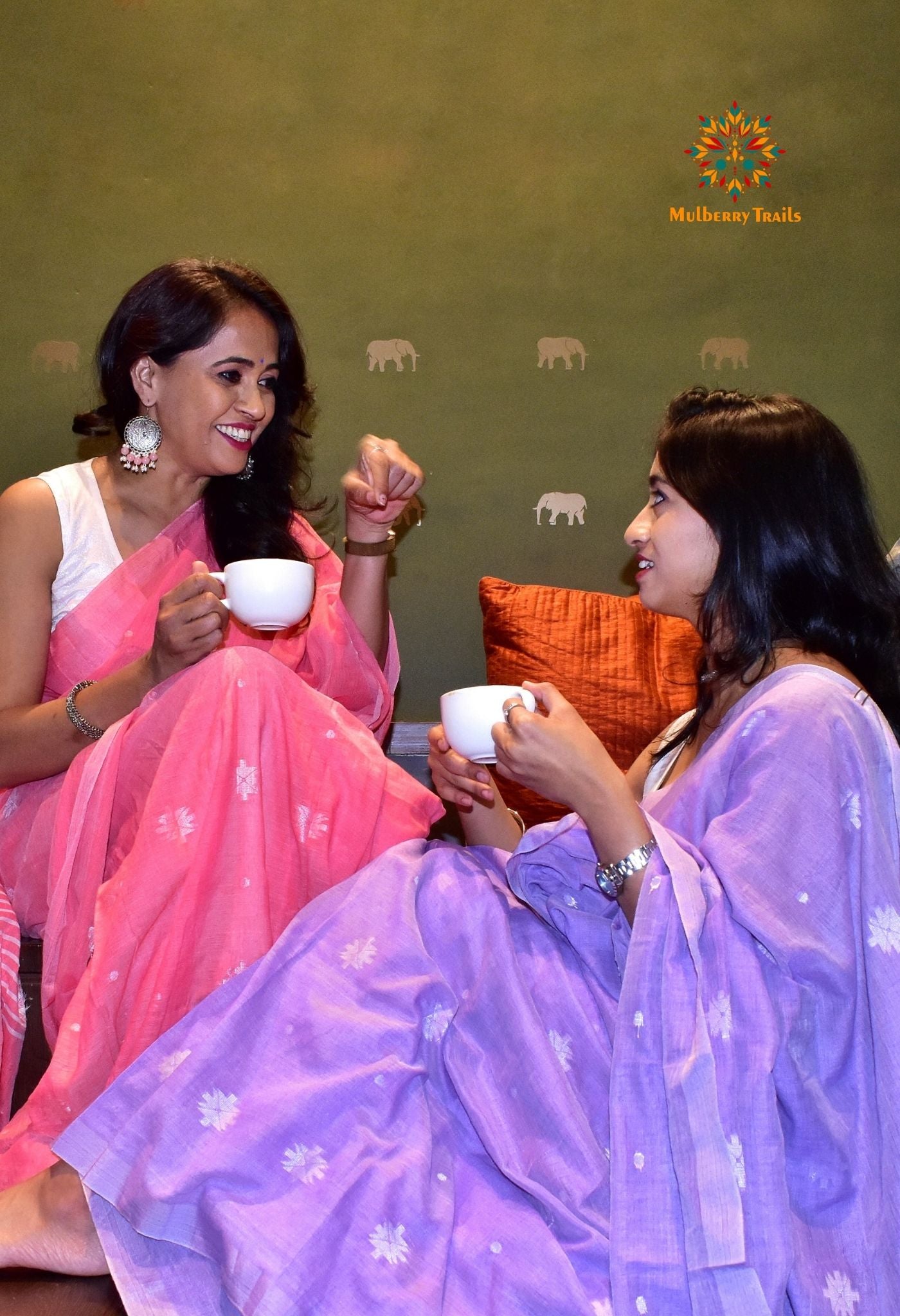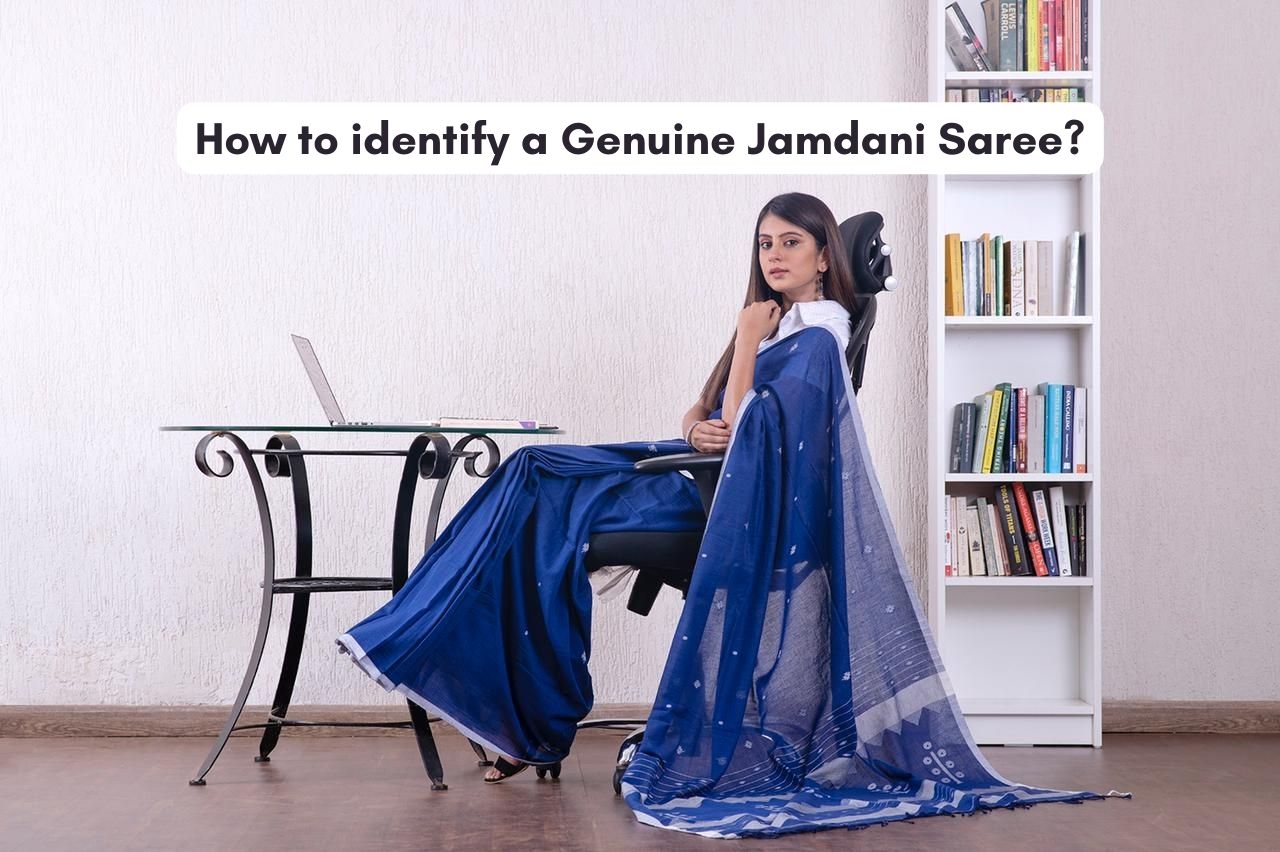Article: How to Identify Comfortable Sarees?

How to Identify Comfortable Sarees?
Sarees, the epitome of elegance and tradition in Indian attire, have been donned by women for centuries. With their graceful drape and intricate designs, sarees have a timeless appeal that transcends generations. However, amidst their beauty, a common question arises: Are sarees comfortable to drape? Let's delve into this age-old debate and debunk some myths surrounding the comfort of saree draping.
**Myth 1: Sarees are Uncomfortable to Wear**
This is unfortunately a misconception. Many people believe that the multiple layers of fabric and the intricate draping process make sarees restrictive and cumbersome. However, this notion couldn't be further from the truth.
In reality, the how a saree drapes depends on the fabric and weaving method. For more comfortable drape, experiment with various fabrics. Try natural, lightweight fabrics like cotton, cotton-silks and breathable silks like Tusser silks.
Another point to remember is choose a fabric as per season. Silks are more suitable for winters whereas cottons, cotton-silks or chiffons are more suitable for summers or in humid climate.
So choosing right Fabric and Weave type can definitely change the experience.
**Myth 2: Sarees Restrict Movement**
Another common misconception is that sarees restrict movement and hinder day-to-day activities. The movement of fabric also depends largely on the draping style. Sarees are incredibly versatile and can be draped in a variety of ways to suit individual preferences and comfort levels. There are numerous styles of draping styles that prioritize comfort and ease of movement.
For instance, the Gujarati drape involves fewer pleats and allows for greater freedom of movement, making it a popular choice for everyday wear. Similarly, the Maharashtrian style of drape, allows freedom of movement.
Origins of saree drapes can be traced back to several regions in India. Some drapes are perfect for hot and humid climates. While some are suitable for colder regions. Additionally, several sarees from north east actually can be draped like a skirt or sarong. This eliminates the need for intricate pleating and tucking. Depending upon where you intend on draping the saree, one can always experiment with different draping styles to make the saree look more comfortable and easier to manage.
**Myth 3: Sarees are High-Maintenance**
Some individuals shy away from wearing sarees due to the perceived high maintenance associated with them. While it's true that certain sarees, particularly those made from delicate fabrics like organza silk, require special care and handling, many sarees are easy to maintain with simple washing and ironing techniques.
Sarees were originally designed for women in ancient India who engaged in physically demanding tasks like farming and household chores, which were more strenuous compared to modern activities. Considering that our grandmothers effortlessly managed these tasks while wearing sarees, it suggests that the issue likely lies in the way sarees are currently manufactured.
**The Truth About Saree Comfort**
In conclusion, the comfort of wearing a saree ultimately depends on personal preference, body type, and the choice of fabric and draping style. While some may find sarees uncomfortable or restrictive, others may feel perfectly at ease and empowered in this traditional attire.
With the availability of lightweight fabrics, traditional draping techniques, and a myriad of styling options, sarees can be both comfortable and fashionable. Whether worn casually for everyday outings or donned for special occasions, the versatility of sarees ensures that there's a style to suit every comfort level and aesthetic preference.
So, the next time you're hesitant to drape a saree, make sure you don't cloud your mind with assumptions. Embrace the beauty and grace of this timeless garment, and you may just discover a newfound appreciation for its comfort and elegance.




Leave a comment
This site is protected by hCaptcha and the hCaptcha Privacy Policy and Terms of Service apply.